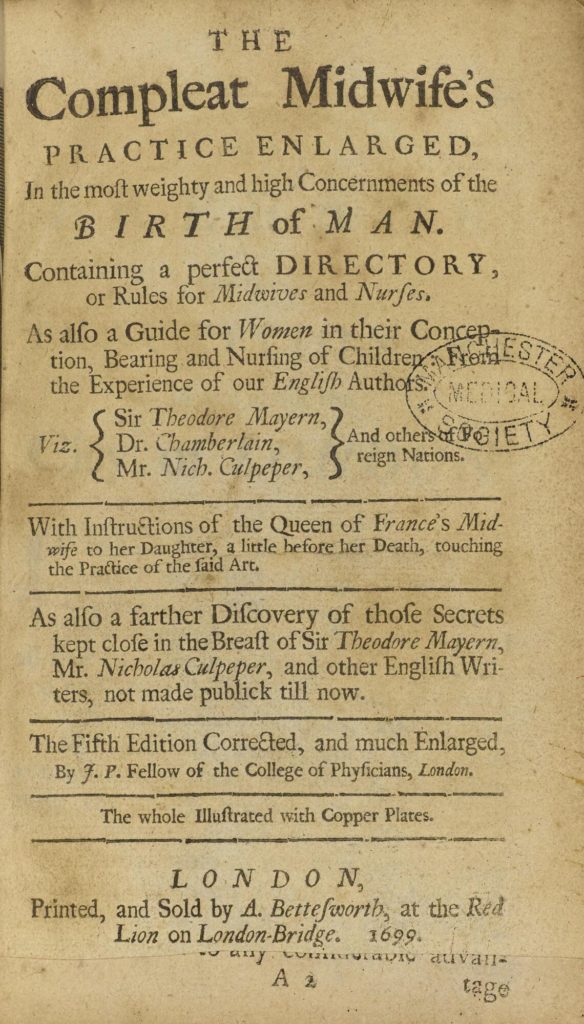Compleat Midwife’s Practice
| Title | The Compleat Midwife’s Practice Enlarge |
|---|---|
| Contributor(s) | Thomas Chamberlayne, John Pechey, & others
|
| Year | unknown origin date, republication in 1698 and 1699 |
The earliest mention we could find of this text is in the metadata from our 1699 source which claims that this text was published in 1656 and attributed to Thomas Chamberlayne (dates uncertain). We also found a mention of a 1663 edition published under the name The Compleat Midwife Her Practice enlarged which is signed only with the initials of six people, “whoever they may be” (Byers, 1912, 1345). A 1698 edition entitled The compleat midwife’s practice enlarged : in the most weighty and high concernments of the birth of man. Containing a perfect directory, or rules for midwives and nurses. As also a guide for women in their conception, bearing and nursing of children: from the experience of our English authors. Viz. Sir Theodore Mayerne, Dr. Chamberlain, Mr. Nich. Culpeper, and others of foreign nations. With instructions of the Queen of France’s midwife to her daughter, a little before her death, touching the practice of the said art. As also a farther discovery of those secrets kept close in the breast of Sir Theodore Mayern, Mr. Nicholas Culpeper, and other English writers, not made publick till now was credited to John Pechey as the editor, whereas the 1699 edition of the same title was edited under Thomas Chamberlayne. Due to the uncertainty of its origins, we have cited the source as starting from the dates they were published in.
As seen in the title and the first few pages of the text, this was a patchwork compilation of famous authors of midwifery, namely Bourgeois, Culpeper, Mauriceau, Chamberlen, and others who we did not add to our corpus.
Entitled as a guide for women and their ability to have children, we explicitly see the social perception of women’s roles in her body. While much of the information is the same from our previous sources, this text serves as a significant identifier on the medical opinion of midwifery. Despite the acclaim, these compiled texts were chosen to be discussed within the text. In both editions that we consulted, there is an address to the reader from “Several PRACTITIONERS” of London which states:
We have perused all that have been in this nature in English, and find them strangely deficient, so crowded with unnecessary Notions, and dangerous Mistakes, that we thought it fit to give you warning of them, to prevent for the future, the many unfortunate Mischiefs at∣tending upon ignorance of these Matters.
(Pechey, 1698, n. pag.)
The opinions of these London practitioners were surely to inform the public on how to ‘truly’ engage with the female body in medicine. Indeed, in reading the 1698 edition we find many of Pechey’s beliefs which had previously been stated in A General Treatise scattered throughout the text. The 1699 edition is nearly identical and there seems to be no interference between this author and Chamberlayne.
Consult the 1697 source
Source
We consulted two editions of this text: the 1698 transcribed edition hosted by the University of Michigan, which served as the source of our .txt data file; and the 1699 digitised edition hosted by the University of Manchester which we consulted for the typographical layout of the book. The 1697 source which have listed here is cited under a different authorship, but the content inside remains the same as other editions.




